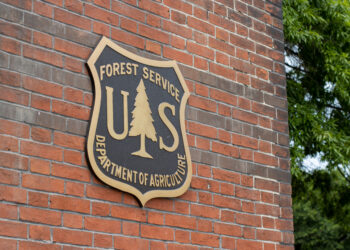By Jessica Olson EBS Contributor
As you might remember, in 2018 a wide-spread algae bloom, larger than any other ever recorded, was observed in the Upper Gallatin River. While algae is a natural part of any riverine ecosystem, this event greatly surpassed desirable conditions.
In an effort to understand why this bloom occurred, the Montana Department of Environmental Quality and the Gallatin River Task Force partnered on a four-year study hoping to answer the following questions: Why now? What changed? And how can we prevent these large-scale blooms in the future?
Nuisance algae is concerning for aquatic ecosystems, and when severe, can be deadly to aquatic life such as fish, amphibians and insects. It can also affect how we enjoy the river when fly fishing, kayaking and rafting. Environmental factors that can influence algae growth include elevated and relative concentrations of nutrients such as nitrogen and phosphorus, warm water temperatures, pH balance, streamflow, sunlight and water clarity.
In 2018, prior to the partnership with the DEQ, the Task Force collected routine data in the West Fork that found that nitrogen levels were some of the highest ever recorded and that the average weekly water temperatures before the bloom were the warmest recorded since temperature sensors were installed in 2009.
Anecdotal evidence from local river users documented more sunny days over July and fewer afternoon thunderstorms that reduce water clarity than in years past. More sunny days and higher water clarity make it possible for more sunlight to reach the stream, better facilitating photosynthesis in algae. The data suggests that the elevated nitrogen levels combined with warm water temperature, clear water and abundant sunshine might have contributed to increased algae growth in 2018.
In 2020, there was another large-scale algae bloom. Data shows that nutrient levels were not elevated, but sufficient to fuel algae growth when combined with other environmental factors. Similar to the 2018 event, these factors allowing the algae to flourish appear to be warm water temperatures and lower streamflows. In addition, there was a significant rain event just prior to the first detection of the algae bloom. This may have supplied the algae with enough nutrients to trigger the bloom; however, more data will be needed to better understand this phenomenon.
Over the next two years, we will continue to collect data to better understand the drivers of nuisance algae growth in the Gallatin. To date, our data suggests that the algae blooms are triggered by a combination of environmental factors that work together, including sufficient and in some cases excess nutrients, warm water temperatures, long, bright sunny days and lower-than-average streamflows.
In the meantime, we’re working to improve water quality and boost water supply in Big Sky to mitigate some of the drivers of algae growth; these efforts include advocating for better wastewater treatment and reuse that will increase water supply, and coordinated stormwater management. In addition, a recently updated Nutrient Reduction Plan will guide our priorities to reduce nutrients. Some of the actions being taken to reduce nutrient loading are restoration projects, providing trash cans and waste bag stations at local community parks and trails to reduce pet waste, and education on water conservation.
What can you as an individual do to help? Make your home water-friendly by applying for a Task Force rebate when you update your showers, faucets and toilets to water-wise fixtures. This keeps more water in the streams to keep water temps cool and nutrient concentrations lower. Employ the Task Force’s Trout-Friendly Landscaping program, an initiative to create lawns that focus on drought-tolerant, native plants. This reduces consumptive water use and cuts back on pollutants like phosphorus that are common in fertilizers. And always scoop the poop. Pet waste is the fifth-highest contributor of nutrients to our creeks.
Taken together, these efforts can help decrease the likelihood of future algae blooms.
Jessica Olson is the Big Sky Watershed Corps member for the Gallatin River Task Force.














